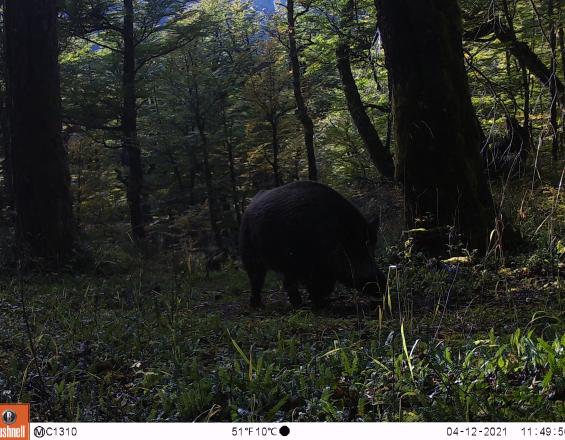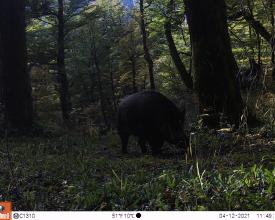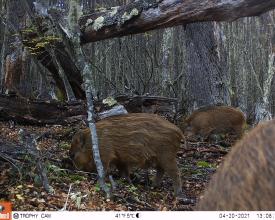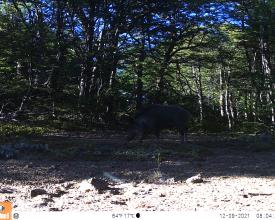Control of wild boar, an invasive exotic species in Cerro Castillo National Park

In Cerro Casillo National Park, Chile, a management plan was developed that identifies various biological conservation targets. Threats associated with the protection of these objects were also identified. One of them is the wild boar(Sus scrofa), an invasive exotic species that impacts one of the main conservation targets of the park: the Huemul (Hippocamelus bisulcus).
Then, through the camera trap monitoring program, the ranger team confirms the presence of wild boar and obtains the first data on abundance, distribution and group composition. To continue the work, agreements are made with authorized hunters and with the owners of the land adjacent to the park. Subsequently, monitoring and captures of the species are carried out, having captured around 20 specimens to date.
Currently, multisectoral work continues with Rewilding, the Agricultural and Livestock Service (SAG), landowners, and authorized hunters.
Context
Challenges addressed
Location
Impacts
- Generate collaborative alliances for monitoring and capture of the species, through agreements with individuals and public and private institutions.
- Agreement with organizations such as Rewilding and Forestal Mininco.
- The presence of an invasive species is confirmed and data is obtained to combat the threat.
- Better progress is being made in complying with the Management Plan and Monitoring Plan.
- Strengthening of the monitoring program with camera traps.
- Improved knowledge and skills of the park ranger team.
- Actions to mitigate the threat of wild boar are included in the Conservation Education Plan. For example, evidence of the exotic species and its impact on the territory is shown. Also, signs are being installed in public areas to warn visitors of possible encounters. In addition, radio broadcasts and talks to the communities surrounding the park.


